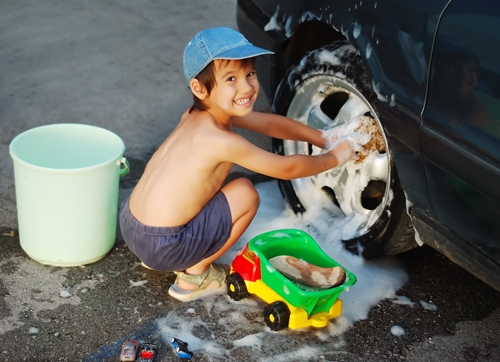Summer tires
When it comes to tire maintenance, many people tend to think of winter as the season when you should mindful of their performance. Given that road conditions are often treacherous during the winter time, it’s easy to understand why. So with summer here and the cold weather in the rearview mirror, there’s really no need to pay as close attention to your tires, right? Nothing could be further from the truth.
Summer is the busiest time of year for road travel, as millions of Americans will head to familiar spots or uncharted territory. However, with Rand McNally reporting major construction projects underway in several parts of the country, vacationers could spend more of their time in their automobiles, putting extra wear and tear on their wheels – not to mention their patience from those “Are we there yet?” questions.
Even though tires are arguably one of the most important parts of a standard vehicle – after all, they’re the only part of the car that touches the ground – many still don’t know what it takes to keep them in healthy shape. According to polling data from the Rubber Manufacturers Association, 80% of drivers don’t know how to correctly identify how much air they have in their tires. Additionally, 33% of motorists can’t determine when it’s time to have their tires replaced.
Pierre Granzotto, Michelin General Manager for Passenger Car and Vice President for the company’s Middle East division, confirmed just how crucial it is to keep an eye on your car’s tires, particularly in the summertime.
“It is essential to take care of your vehicle’s tires, especially during the summer months when the scorching degrees and high humidity can be taxing for the car, as well as its different components,” Granzotto explained. “Well-maintained tires, a car’s only contact with the road, will improve motorists’ safety and help avoid any costly repairs.”
The following are a few basic ways to keep your tires going strong all summer long:
Routinely check air pressure
When a tire pops, it’s pretty easy to realize this simply by eyeballing it, to say nothing of the “popping” sounds that you’re bound to hear. That said, because tires naturally deflate over time – especially after extended use – eyeballing your tires isn’t enough. Head to your local gas station – or purchase a portage tire pressure gauge – to check the PSI level of your tires, ideally two to three times per month. You can determine how much air your tires should be filled with by consulting either your owner’s manual or the inside portion of the driver’s side door. There should be a sticker there detailing the proper PSI.
Do the penny test
The grooves in your tires perform a variety of important functions, like gripping the road and wicking away rainwater to prevent hydroplaning. Over time, tread wears away, diminishing your tires’ effectiveness. Using a penny with the headside down, insert the coin into your tires’ grooves. If you’re able to see the top of Abraham Lincoln’s head, then it’s time for a new set.
Rotate your tires
As frustrating as roadwork can be, resurfacing is often necessary to keep your ride as smooth as possible. Even with a fresh coating, though, your tires experience the road in different ways depending on where they’re positioned. You can even out wear by rotating the front to back every 5,000 to 6,000 miles. Of course, you can do this yourself with the proper tire replacement tools, but you may want to set up an appointment with your mechanic who can do it more quickly.
Be wary of vibration
Every now and then, it’s a good idea to turn the volume down on your car radio so you can listen and feel how your car performs. Doing this will allow you to experience things that you might otherwise not notice. A classic example is if your car is vibrating. When traveling at higher speeds – the kind that are common on the highway – your car may shake uncontrollably. This is an indication of one of two things: The road is under construction or your tires are out of alignment. If the latter, make it a priority to get the problem fixed soon, as it will only get worse over time. This is another reason why having your tires rotated is a key component of tire maintenance.
With these tips, your summer road trip will go a lot more smoothly. As for the “Are we there yet?” questions, that’s another story.
Article last updated on April 17th, 2024 at 11:37 am

